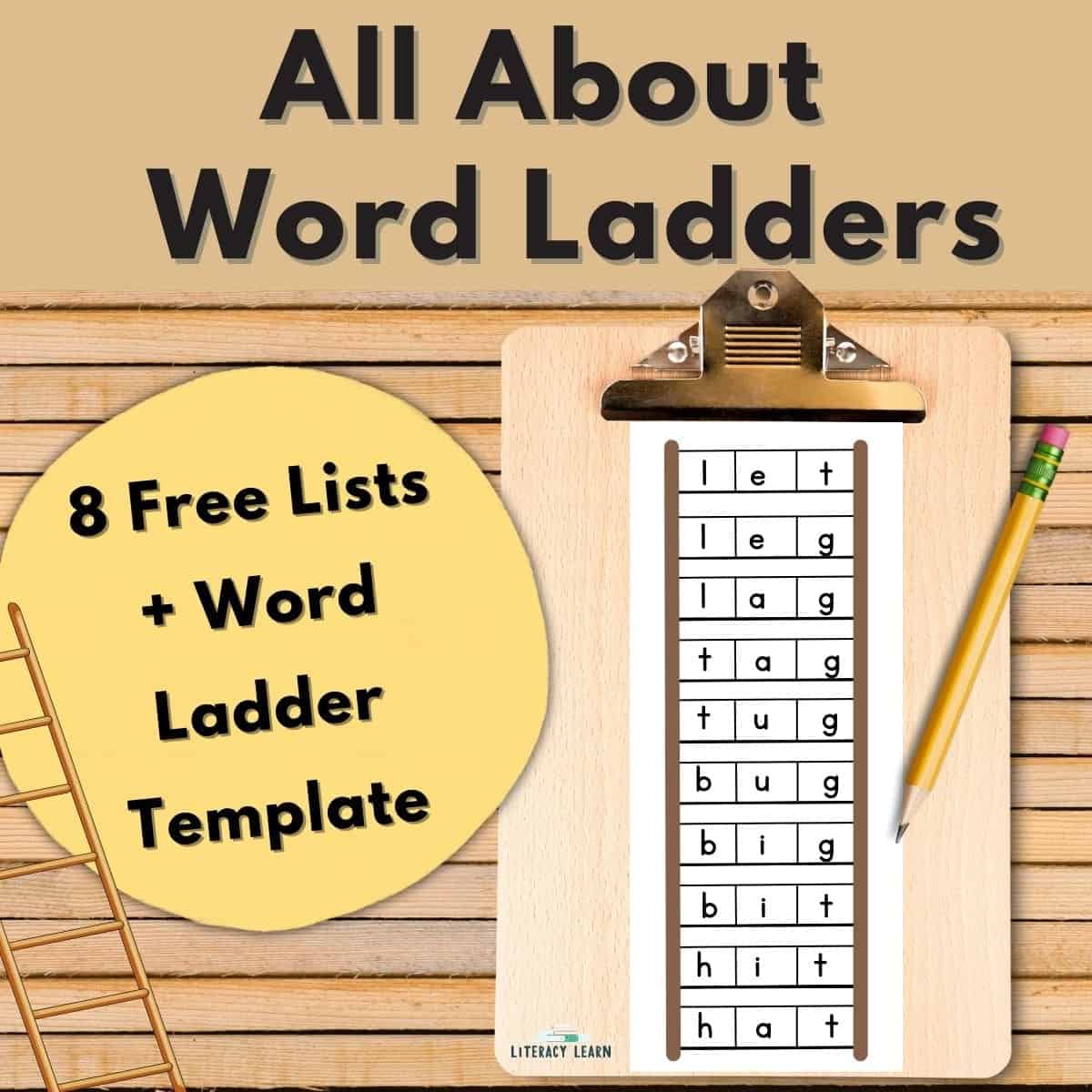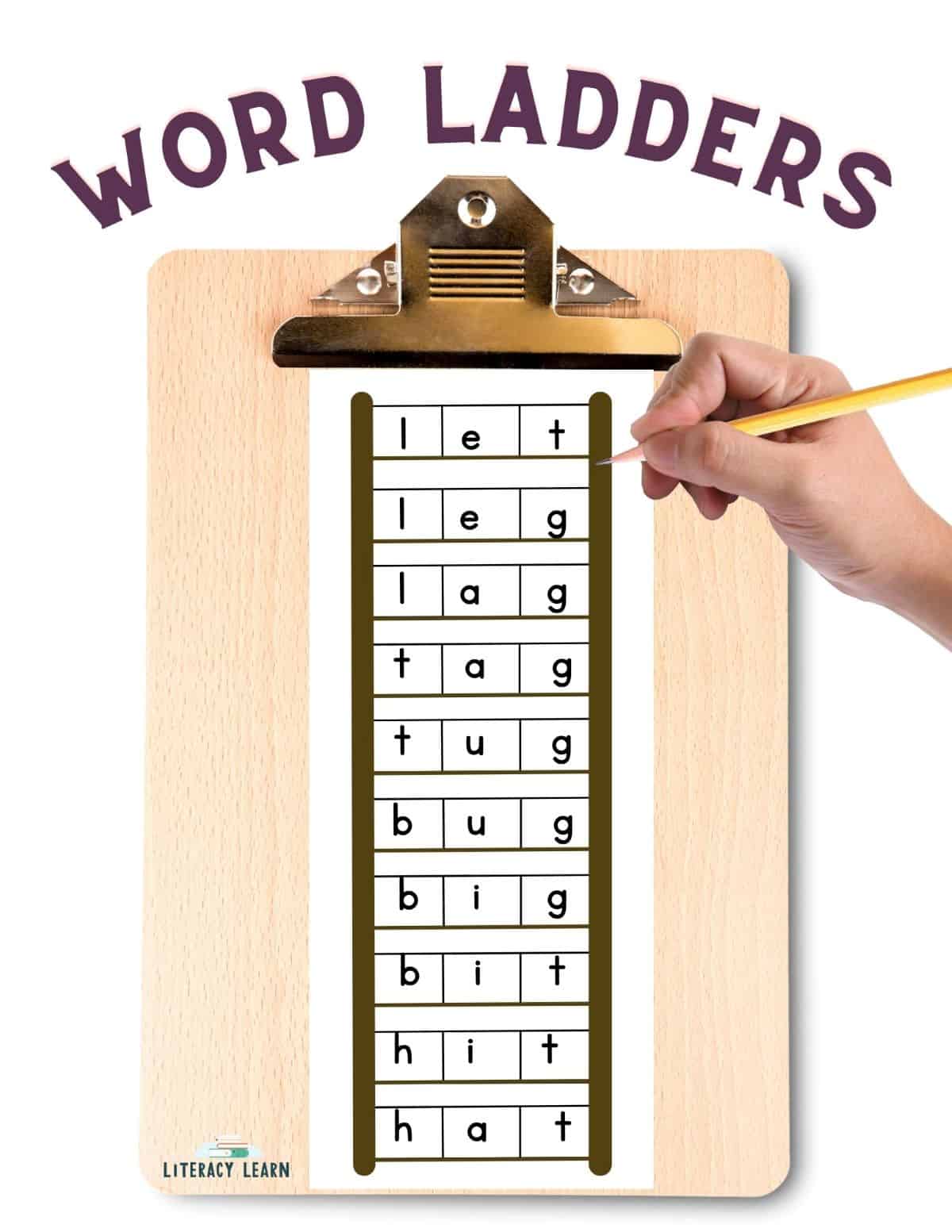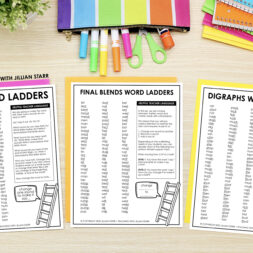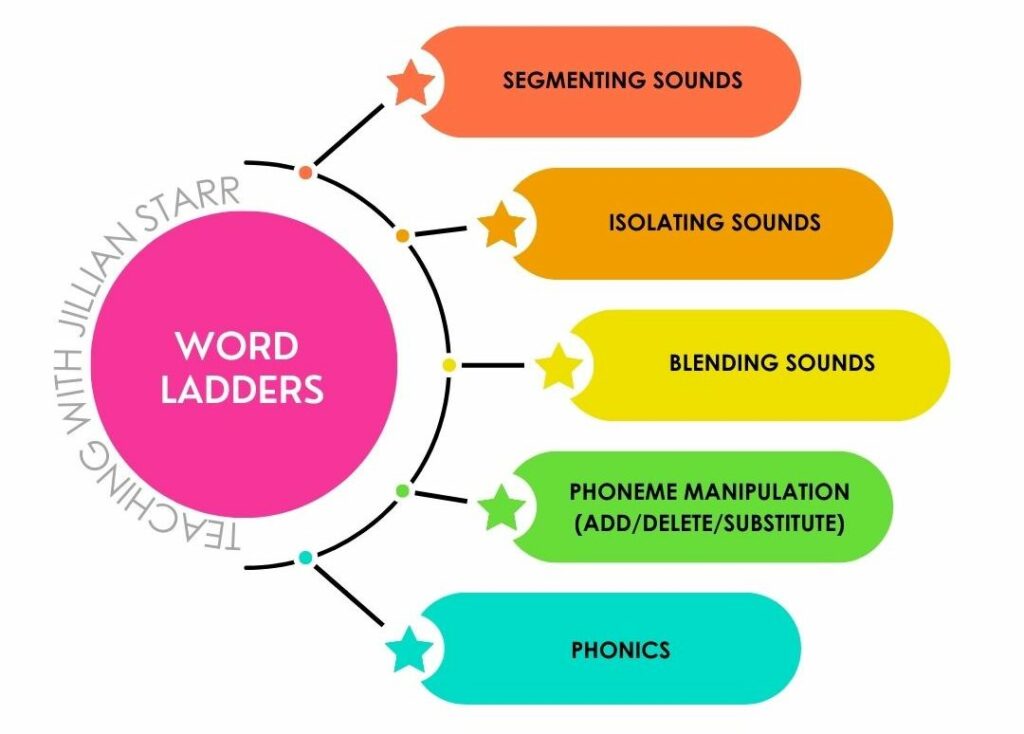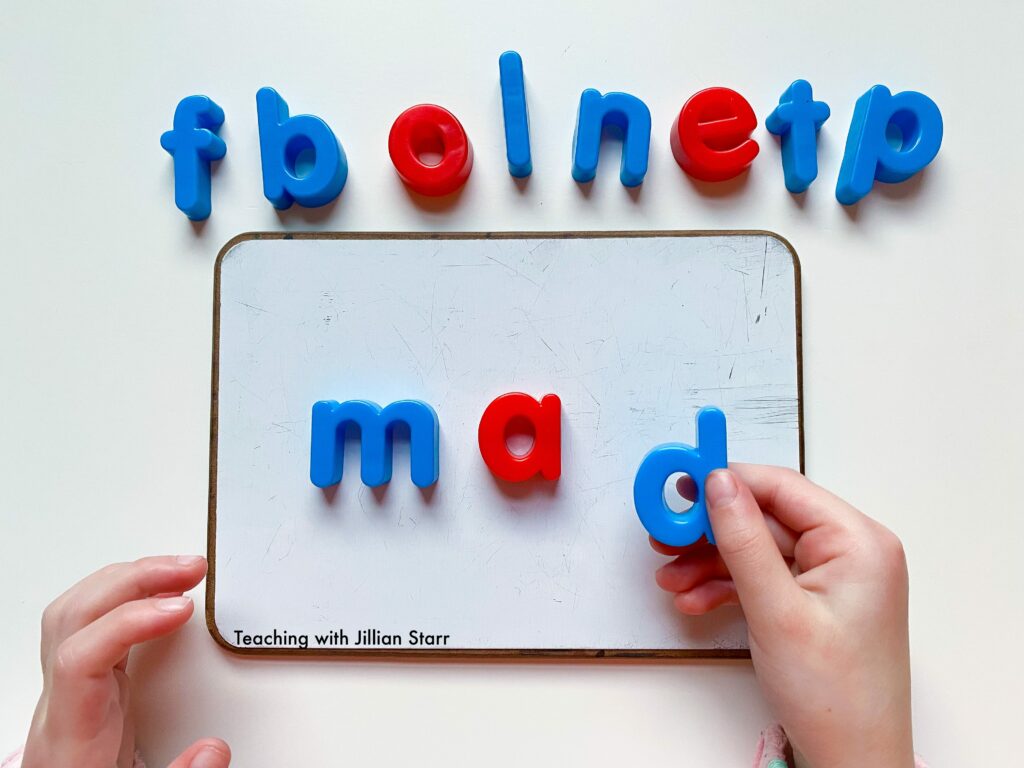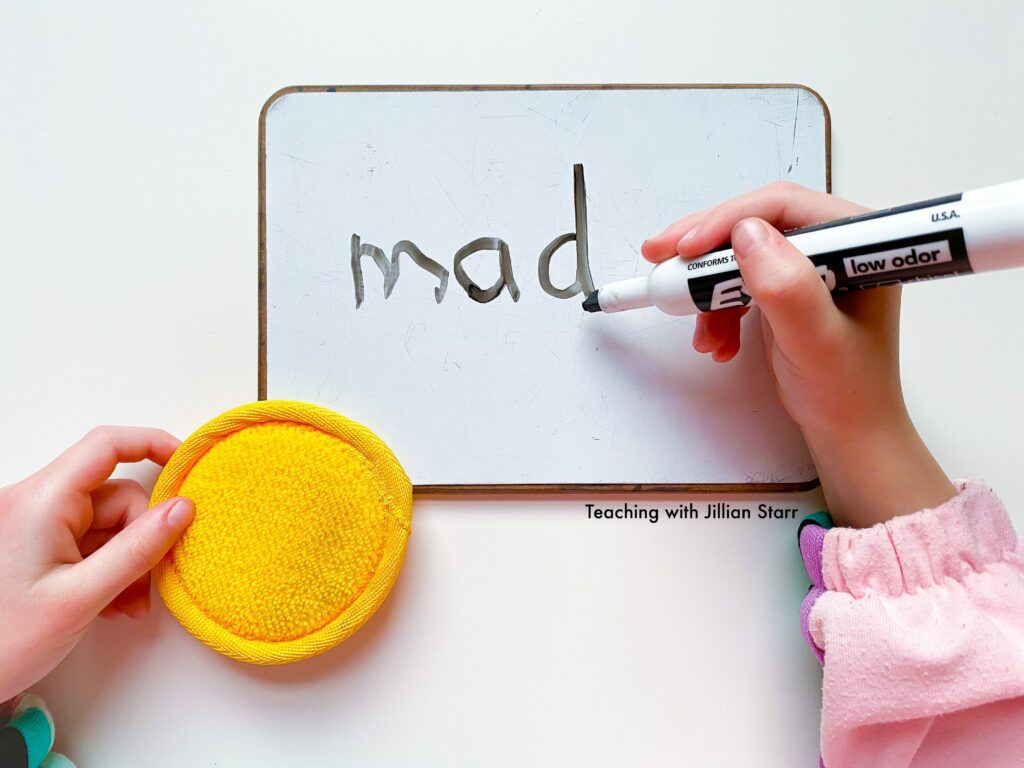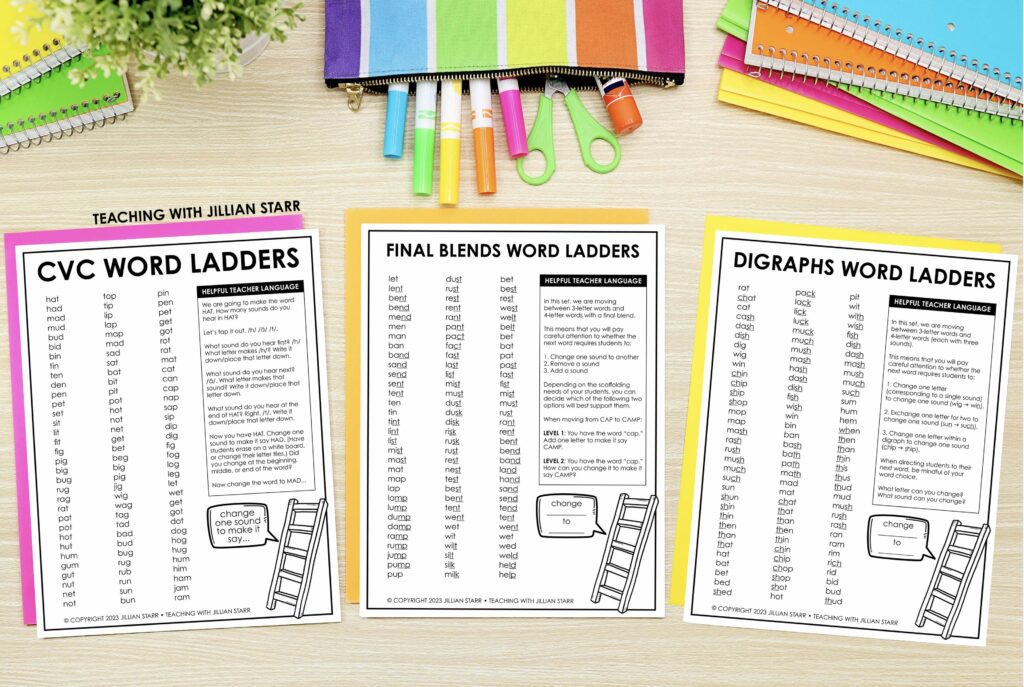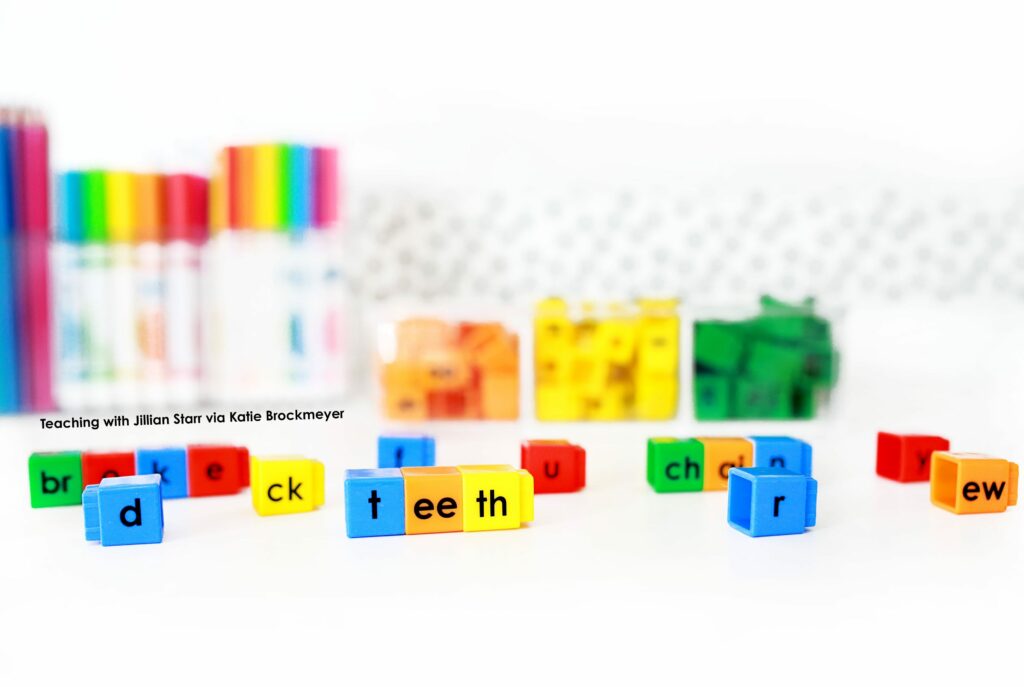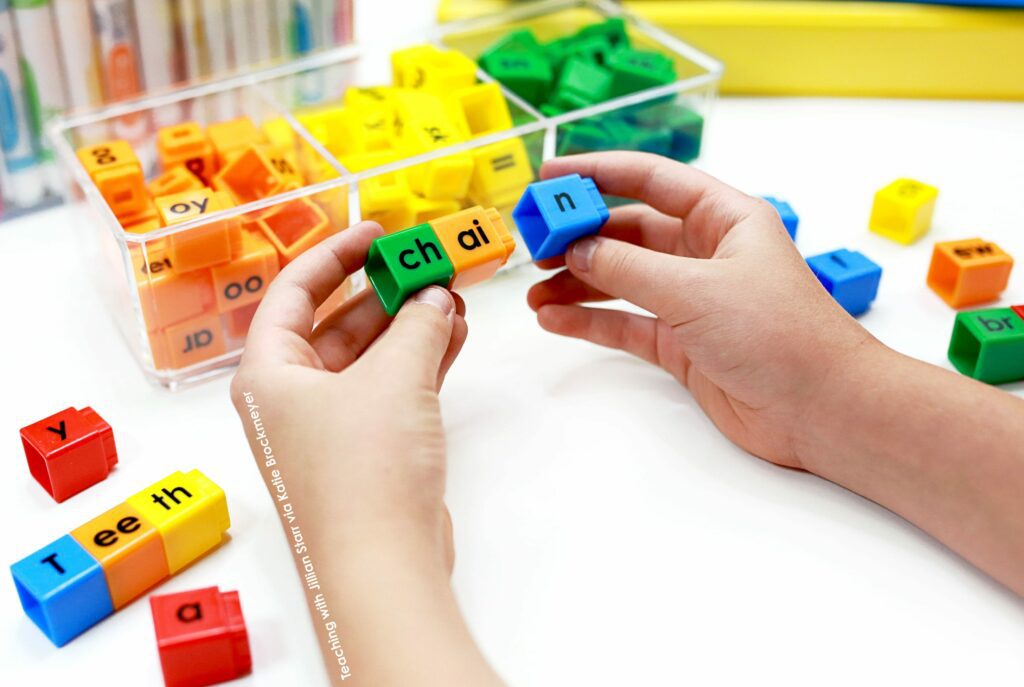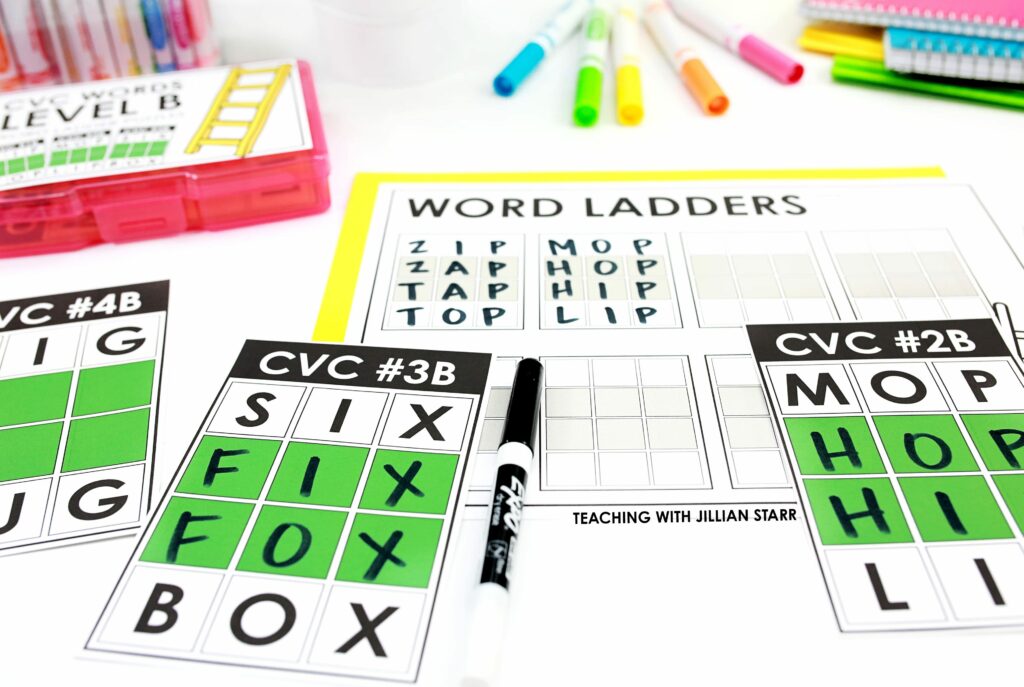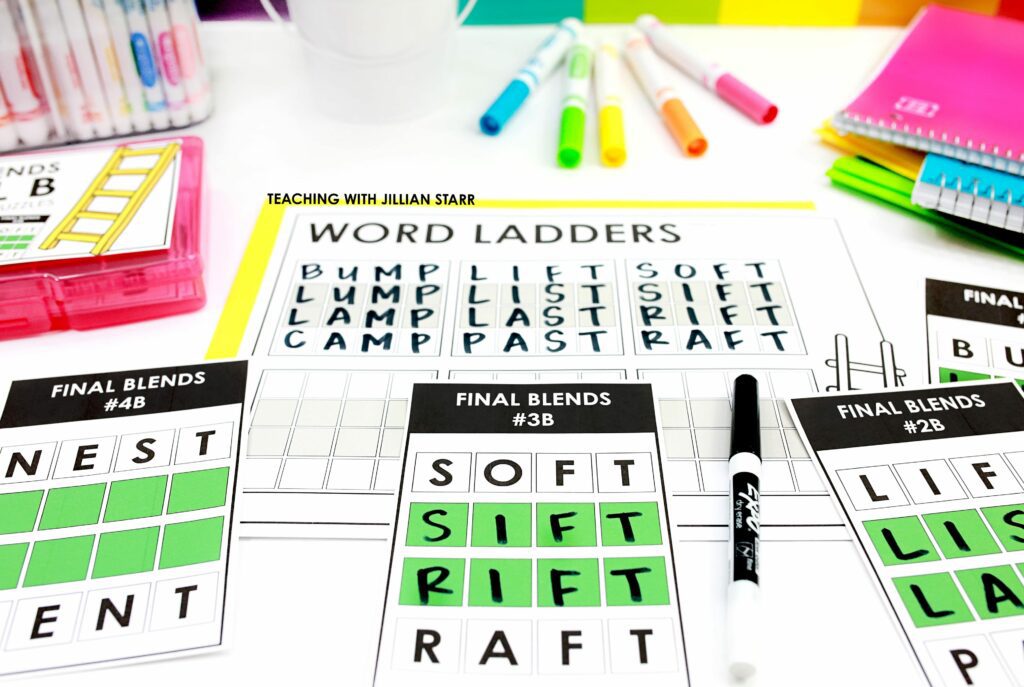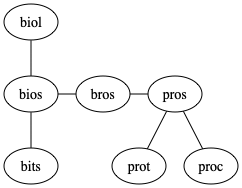From Wikipedia, the free encyclopedia
Lewis Carroll’s doublet in Vanity Fair, March 1897 changing the word «head» to «tail» in five steps, one letter at a time
Word ladder (also known as Doublets,[1] word-links, change-the-word puzzles, paragrams, laddergrams,[2] or word golf) is a word game invented by Lewis Carroll. A word ladder puzzle begins with two words, and to solve the puzzle one must find a chain of other words to link the two, in which two adjacent words (that is, words in successive steps) differ by one letter.[3]
History[edit]
Lewis Carroll says that he invented the game on Christmas day in 1877.[3] Carroll devised the word game for Julia and Ethel Arnold.[4] The first mention of the game in Carroll’s diary was on March 12, 1878, which he originally called «Word-links», and described as a two-player game.[3] Carroll published a series of word ladder puzzles and solutions, which he then called «Doublets», in the magazine Vanity Fair, beginning with the March 29, 1879 issue.[3] Later that year it was made into a book, published by Macmillan and Co.[5]
J. E. Surrick and L. M. Conant published a book Laddergrams of such puzzles in 1927.[1]
Vladimir Nabokov alluded to the game using the name «word golf» in the novel Pale Fire, in which the narrator says ‘some of my records are: hate—love in three, lass—male in four, and live—dead in five (with «lend» in the middle).’[1]
The game was revived in Australia in the 1990s by The Canberra Times as «Stepword».[6]
Word ladders are often featured in the New York Times crossword puzzle.[7][8][9]
Rules[edit]
The player is given a start word and an end word. In order to win the game, the player must change the start word into the end word progressively, creating an existing word at each step. Each step consists of a single letter substitution.[3] For example, the following are the seven shortest solutions to the word ladder puzzle between words «cold» and «warm», using words from Collins Scrabble Words.
-
COLD → CORD → CORM → WORM → WARM COLD → CORD → CARD → WARD → WARM COLD → CORD → WORD → WARD → WARM COLD → CORD → WORD → WORM → WARM COLD → WOLD → WORD → WORM → WARM COLD → WOLD → WORD → WARD → WARM COLD → WOLD → WALD → WARD → WARM
As each step changes only one letter, the number of steps must be at least the Hamming distance between the two words – four in the above example.[10] Lewis Carroll’s example has an extra fifth step as the third letter changes twice.
Often word ladder puzzles are created where the end word has some kind of relationship with the start word (synonymous, antonymous, semantic…). This was also the way the game was originally devised by Lewis Carroll when it first appeared in Vanity Fair.
Some variations also allow the player to add or remove letters, and to rearrange the same letters into a different order (an anagram).
Five-letter word ladders[edit]
Donald Knuth used a computer to study word ladders of five-letter words. He felt that three and four were too easy and six was too hard.[3] Knuth used a collection of 5,757 common English five-letter words, excluding proper nouns. He wrote a program which showed the steps connecting any two words, or noted that no connection was possible.[3] He found that many word pairs were connected, but that 671 words were not connected to any other word, i.e ‘had no neighbours’, as he put it. He called these words «aloof», and noted amusingly that «aloof» is itself such a word.[3]
See also[edit]
- Paronym
Notes[edit]
- ^ a b c Augarde, Tony Oxford Guide to Word Games Oxford University Press, 2nd ed. 2003 p.216 ISBN 0-19-866264-5
- ^ «Laddergrams». Laddergrams. Retrieved 2016-03-05.
- ^ a b c d e f g h Deanna Haunsperger, Stephen Kennedy (July 31, 2006). The Edge of the Universe: Celebrating Ten Years of Math Horizons. Mathematical Association of America. p. 22. ISBN 0-88385-555-0.
- ^ Cohen, Morton N. (2015-04-09). Lewis Carroll: A Biography. Pan Macmillan. ISBN 978-1-4472-8614-1.
- ^ Charles Lutwidge Dodgson (1879). Doublets, a word-puzzle, by Lewis Carroll. Macmillan and Co.
- ^ «Cold Heat». The Canberra Times. Vol. 65, no. 20, 392. Australian Capital Territory, Australia. 10 February 1991. p. 3. Retrieved 18 September 2017 – via National Library of Australia.
- ^ Amlen, Deb (2017-02-21). «Quite Enough». The New York Times. ISSN 0362-4331. Retrieved 2020-08-22.
- ^ Amlen, Deb (2018-06-13). «Way to Go on Record». The New York Times. ISSN 0362-4331. Retrieved 2020-08-22.
- ^ Gaffney, Thomas (2013-06-19). «Climb the Ladder». Wordplay Blog. Retrieved 2020-08-22.
- ^ Waggener, Bill (1995). Pulse Code Modulation Techniques. Springer. p. 206. ISBN 9780442014360. Retrieved 13 June 2020.
External links[edit]
- The longest word ladder puzzle ever Computer analysis to find long word ladders
- Doublets, a word puzzle, by Lewis Carroll
- An on-line word-ladder solver for Afrikaans, English, Esperanto, German and Spanish (requires login)
- An on-line word-ladder solver for English
- Lewis Carroll Resources On-line facility giving Carroll’s original puzzles with hints and solutions and tool to help solve and compile puzzles
Learn why word ladders (aka word chains) are an effective strategy when teaching kids to read and spell with accuracy. Get two free printables so you can begin using word ladders in your classroom today!
What Are Word Ladders?
Word ladders, which are also known as word chains, are an instructional tool used to help children learn to read and spell while developing phonics and vocabulary skills.
There’s a very basic process to use word ladders: Kids begin with one word that follows a phonics skill they’re working on. Then, they’re asked to make a bunch of other words by making simple changes to the letters of the word that came before.
When students add, remove, or rearrange letters, they have to analyze the sound-symbol relationship that words have.
👉 Example: If you’ve taught your students closed syllable words and all short vowels, your word ladder may look like: hat ➡ hit ➡ bit ➡big ➡ bug ➡ tug ➡ tag ➡ lag ➡ leg ➡ let.
👉 Students start on the bottom rung and move up the ladder, changing the letters to represent the new sounds and spelling new words!
Through this simple chaining activity example, students have analyzed all five vowel sounds, plus beginning sounds and ending sounds.
👉 Repeated practice with this activity provides a bridge between phonological awareness and phonics, the two first building blocks of reading.
💗 Why We Love Them
Word ladders have TONS of benefits for students. In general, using them helps build kids’ decoding and encoding skills.
When using word ladders, students use phoneme-grapheme mapping, connecting sounds (phonemes) to written letters (graphemes).
This is an important research-based Science of Reading principle that has shown us how the brain stores words to become automatic sight words.
Word ladders force kids to listen to words, analyze the sounds, and connect them to written letters. The words usually change by one phoneme (sound), so students first need to decide which sound is changing in the word.
This is called phoneme manipulation, a phonemic awareness skill.
Then, students need to think about which grapheme (written letters) will represent the new sound, a phonics skill. It’s the perfect bridge between phonological awareness and phonics.
Best of all, children LOVE this activity! It’s challenging, fun, and rewarding when they make it to the top!
Students don’t even realize that they are engaged in a learning activity that reinforces important phonics skills they’ve been taught.
And it only takes a few minutes each day!
⛓️ Word Chaining Resource
To help you get started, we’re giving away a FREE resource for word chaining. Included are 8 word lists with 80+ CVC words. Also included is a word ladder with sound boxes for 3 phoneme words.
Time needed: 10 minutes.
How to Use Word Ladders
- The teacher dictates the first word on the list.
- The students repeat the word aloud.
- Students tap the sounds in word or use manipulatives for multisensory learning.
- Students spell the word in the first rung of the word ladder.
They should say each sound aloud as they write the word.
- Students check their word, saying the sounds and blending it together to read the word.
- The teacher dictates the next word on the list, saying “Change the word to….”
The teacher should NOT say which sound is being changed. This is for the students to figure out and practice.
- The teacher continues reading the words on the list while students chain each word, following the above procedure, until they reach the top of the ladder.
Looking for more? This is part of a bigger Word Chaining Resource that covers 780 words and tons of phonics skills, from CVC words to words with advanced diphthongs and everything in between.
Tips & Ideas
👉 Word ladders are great for kids in K-3 grade, or any students working on phonics.
👉 Word chaining activities are best used with small groups or whole groups with a teacher (or instructional assistant, volunteer, or advanced reader) reading the list aloud.
👉 Use this activity for encoding with small groups or with your entire class! Then, extend the activity and have students practice decoding the words quickly!
👉 Send the word ladders home for repeated review and practice.
👉✨This is the activity I pull out when administrators walk into my classroom to observe. My students are very familiar with the procedure (since we use it for each skill).
I always have extra ladders printed and sitting near my small group table, and then I quickly pull out my word lists and just like that! We’re doing meaningful and targeted phonics instruction that makes me look like a teacher of the year (with no prep)!
We hope you are encouraged to start implementing word ladders as a common instructional strategy within your classroom!
Related Posts
- All About Elkonin Boxes
- Word Families Anchor Chart
- High Frequency Words Game
- Phonics Bingo Games
🖨️Download & Print
We’d love to hear about your experience using these printables! Please leave a comment below or tag us on Instagram @literacylearn.
TERMS: All resources and printables are designed for personal use only in your own home and classroom. Each person must visit this site and download their own free copy. Please do not photocopy, email, or reproduce our printable resources for other teachers, and please do not reproduce our printables on the web or save them to a shared drive. Instead, please share the resources with others by using the social share links provided or by distributing the link to the blog post itself. This allows us to keep making free resources for everyone! If you have any questions, please email us. Please see our Creative Credits page for information regarding the licensed ClipArt used in our resources. Thank you!
Word Ladder (также известный как Doublets, словесные ссылки, головоломки со сменой слов, параграммы, лестничные диаграммы или слово гольф ) словесная игра, изобретенная Льюисом Кэрроллом. Головоломка со словесной лестницей начинается с двух слов, и для решения головоломки нужно найти цепочку других слов, чтобы связать эти два слова, в которой два соседних слова (то есть слова в последовательных шагах) отличаются на одну букву.
Содержание
- 1 История
- 2 Правила
- 3 Пятибуквенные цепочки слов
- 4 См. Также
- 5 Примечания
- 6 Внешние ссылки
История
Льюис Кэрролл говорит, что он изобрел игру на Рождество в 1877 году. Кэрролл разработал словесную игру для Джулии и Этель Арнольд. Первое упоминание об игре в дневнике Кэрролла было 12 марта 1878 года, которое он первоначально назвал «Word-links» и описал как игру для двух игроков. Кэрролл опубликовал в журнале Vanity Fair, начиная с выпуска от 29 марта 1879 года, серию головоломок и решений со словесной лестницей, которые он затем назвал «Дублетами». Позже в том же году он был преобразован в книгу, опубликованную Macmillan and Co.
J. Э. Суррик и Л.М. Конант опубликовали книгу Ладдерграммы таких головоломок в 1927 году.
Владимир Набоков упомянул игру под названием «гольф» в романе Бледный огонь, в котором рассказчик говорит: «Некоторые из моих записей: ненависть — любовь в трех, девушка — мужчина в четырех и живая — мертвая в пяти (с« одолжить »в середине)».
Игра была возрождена в Австралии в 1990-х годах издательством The Canberra Times как «Stepword».
Словарные лестницы часто используются в кроссвордах New York Times.
Правила
Игроку дается начальное и конечное слово. Чтобы выиграть игру, игрок должен постепенно менять начальное слово на конечное, создавая существующее слово на каждом шаге. Каждый шаг состоит из замены одной буквы. Например, ниже приведены семь кратчайших решений головоломки со словом «лестница» между словами «холодный» и «теплый» с использованием слов из Collins Scrabble Words.
COLD → CO R D → C A RD → W ARD → WAR M
COLD → CO R D → COR M→ WORM → W ARM
COLD → CO R D → W ORD → W A RD → WAR M
COLD → CO R D → W ORD → WOR M → W ARM
COLD → W OLD → W A LD → WA R D → WAR M
COLD → W СТАРЫЙ → WO R D → W A RD → WAR M
ХОЛОДНЫЙ → W СТАРЫЙ → WO R D → WOR M → W ARM
Часто головоломки со словесной лестницей создаются, где конечное слово имеет какую-то связь с начальным словом (синоним, антоним, смысловой…). Именно так игра была первоначально разработана Льюисом Кэрроллом, когда она впервые появилась в Vanity Fair.
Некоторые варианты также позволяют игроку добавлять или удалять буквы и переставлять те же буквы в другом порядке (анаграмма ).
Пятибуквенные лестницы слов
Дональд Кнут использовал компьютер для изучения словарных лестниц пятибуквенных слов. Он считал, что лестницы из трехбуквенных слов были слишком легкими (хотя Льюис Кэрролл обнаружил, что для превращения APE в MAN требуется шесть ступеней), и что лестницы из шести букв были менее интересны, поскольку относительно небольшое количество пар шестибуквенных слов могло быть связано со словесной лестницей. Кнут использовал фиксированный набор из 5 757 наиболее распространенных английских пятибуквенных слов, за исключением существительных. Он точно определил, когда между двумя словами из сборника возникла словная лестница, через другие слова из сборника. Кнут обнаружил, что большинство слов связаны друг с другом, и он также обнаружил, что 671 слово из сборника не образуют словесную лестницу с другими словами. Он назвал эти слова «отчужденный», потому что «отчужденный» сам по себе является примером такого слова.
См. Также
- Пароним
Примечания
- ^ Огард, Тони Оксфорд. Руководство по играм в слова Оксфордского университета Press, 2-е изд. 2003 с.216 ISBN 0-19-866264-5
- ^«Лестничные диаграммы». Лестничные диаграммы. Проверено 5 марта 2016 г.
- ^ Дина Хаунспергер, Стивен Кеннеди (31 июля 2006 г.). Край вселенной: празднование десяти лет математических горизонтов. Математическая ассоциация Америки. п. 22. ISBN 0-88385-555-0 .
- ^Коэн, Мортон Н. (09.04.2015). Льюис Кэрролл: Биография. Пан Макмиллан. ISBN 978-1-4472-8614-1 .
- ^Чарльз Латвидж Доджсон (1879). Дублеты, словесная головоломка Льюиса Кэрролла. Макмиллан и Ко.
- ^«Холодная жара». Канберра Таймс. 65(20, 392). Австралийская столичная территория, Австралия. 10 февраля 1991 г. с. 3. Получено 18 сентября 2017 г. — через Национальную библиотеку Австралии.
- ^Амлен, Деб (21.02.2017). «Достаточно». Нью-Йорк Таймс. ISSN 0362-4331. Проверено 22 августа 2020 г.
- ^Амлен, Деб (13 июня 2018 г.). «Путь к записи». Нью-Йорк Таймс. ISSN 0362-4331. Проверено 22 августа 2020 г.
- ^Гаффни, Томас (19 июня 2013 г.). «Поднимитесь по лестнице». Блог игры слов. Проверено 22 августа 2020 г.
Внешние ссылки
- Самая длинная словесная головоломка в истории Компьютерный анализ для поиска длинных словесных лестниц
- Дублеты, словесная головоломка, Льюис Кэрролл
- Он-лайн слово-лестница для африкаанс, английского, эсперанто, немецкого и испанского (требуется вход в систему)
- Он-лайн слово-лестница для английского языка
- Ресурсы Льюиса Кэрролла Он-лайн средство, дающее оригинальные головоломки Кэрролла с подсказками решения и инструменты для решения и составления головоломок
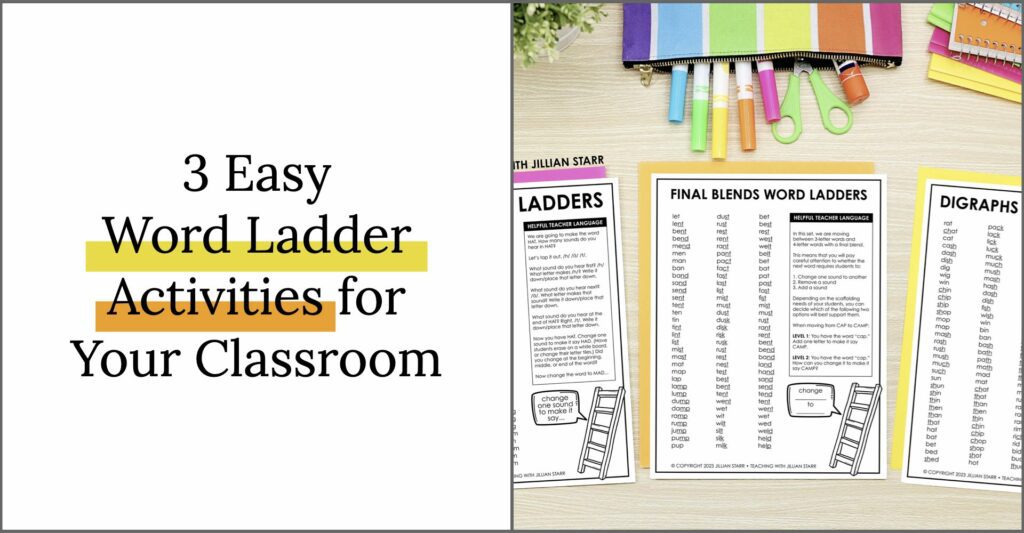
I’m excited to dive into word ladders with you. We will take a close look at how word ladders are such a powerful tool in our literacy instruction. We are also going to look at three easy ways to differentiate word ladders in your classroom to meet the needs of all learners.
But first… let’s answer one crucial question:
What are Word Ladders?
Word ladders (sometimes called word chains) are an exercise used to build phonemic awareness and phonics skills. They follow a progression where you change one sound at a time to create new words. Example: cat, hat, hit, pit, pot, dot, dog.
Free Word Ladder Lists
Stop trying to think on the spot and save that energy for observing your student’s phonemic awareness and phonics skills. Get these FREE word ladder lists delivered straight to your inbox!
Depending on the delivery, these versatile exercises can be done with the whole group, in small groups, at centers, or as individual work.
All students benefit from systematic, explicit, and consistent instruction in phonemic awareness and phonics. If you’re unsure about the importance of these skills or what they include, I would encourage you to read this blog post on the Science of Reading, and this article for some specific background knowledge.
Now, word ladders are an incredible tool to add to our teacher toolbelts, because they can support our explicit instruction. Word ladders build so many essential literacy skills:
- isolating sounds
- segmenting sounds
- blending sounds
- phoneme manipulation (addition/deletion/substitution)
- phonics
- vocabulary
- and more
Because word ladders can target so many skills simultaneously, they are an ideal addition to any classroom.
Even better? Word ladders can be easily differentiated (both in content and setting). Huzzah!
1. Using Word Ladders in Small Groups
Small groups are the perfect place to introduce word ladders and keep them a consistent part of your systematic instruction. I want to make sure that my students can access this activity, so I select words that my students are currently working with and/or have already mastered.
Phoneme Word Ladders
Don’t worry! If you have students who are not ready for letters, you can still use word ladders with them! We simply focus on phonemes (the units of sound) and leave out the graphemes (the letter representations of those phonemes).
How does that work? Well, first we need bingo chips, pom-poms, plastic gems, or any other small (and engaging) item. We will use these to represent each individual phoneme. For this example of phoneme word ladders, let’s say we’re using bingo chips.
- I will give each student 4 bingo chips. I ask how many sounds they hear in the word “hat”?
- /h/ /a/ /t/ I have them place three bingo chips in a row to represent each of those sounds. (The extra stays on top and has no sound assigned.)
- We segment the sounds again, /h/ /a/ /t/, pointing to one chip at a time as we say each sound.
- We blend the sounds together to say “hat”.
- I point to their chips and say “if this is HAT, show us MAT.”
- We segment the word /m/ /a/ /t/
- We determine which sound needs to be manipulated (initial medial, or final)
- Students exchange the first chip in their row with the extra (fourth) chip to visually show the sound manipulation.
- We segment the sounds again, /m/ /a/ /t/, pointing to one chip at a time as we say each sound.
- We blend the sounds together to say “mat”.
We can continue manipulating sounds and stop before our students tire of the activity. We can slowly bring sound additions/deletions into the mix (e.g. moving from “mat” to “mast” or “mat” to “at”).
We can also try more sophisticated skills like blends and digraphs. For blends, you will need additional bingo chips, but remember that digraphs (like ch, th, and sh) will only need one bingo chip for that single sound.
Grapheme Word Ladders
For my students who are ready for letters, I will often start word ladders with CVC words (short vowel words that follow a consonant-vowel-consonant pattern). I do this even if my students are farther along in their phonics studies. This will help them get used to the routine, and the language around word ladders.
I personally prefer whiteboards and markers, but you can use so many different tools or manipulatives for your word ladder lessons. Some favorites include:
- magnetic letters
- letter tiles
- write & wipe boards
- sand/shaving cream trays
For this example, let’s use whiteboards. I write the word “map” on the whiteboard. Then, I ask my students to read it. We segment each sound (/m/ /a/ /p/) and blend it together.
Then I tell them that I want to change this word to “mad.” Just like our phoneme word ladders, we segment each sound (/m/ /a/ /d/) and identify which phoneme needs to be changed, and then which grapheme will replace it.
On a whiteboard, I model how to do this by erasing the “p” and writing a “d” in its place.
Next Steps
After a few rounds, I take word ladders a step further. Students receive their own whiteboards, markers, and erasers.
I continue to provide new words for our word ladders and have students erase and write new letters as we manipulate sounds.
You can find FREE lists of word ladders below (I made a bunch by phonics skill so you don’t have to think on the spot!)
Free Word Ladder Lists
Stop trying to think on the spot and save that energy for observing your student’s phonemic awareness and phonics skills. Get these FREE word ladder lists delivered straight to your inbox!
2. Independent Exploration of Word Ladders
In small groups, we modeled word ladders together, where students had constant access to a teacher to support any questions or misunderstandings.
After several successful experiences in small groups, they are ready to continue practicing word ladders in a more independent setting.
Presenting… Word Ladders with Phoneme Snap Cubes.
How does it work?
You might be asking yourself, Aren’t snap cubes a math manipulative?
Yes! This means they are most likely already available in your classroom, and students already know how to use them.
Students begin with a pre-built word of snap cubes (these can be either purchased pre-made, or created using a sharpie/stickers on the cubes in your classroom). Each cube represents a letter or a phoneme (a sound). Students can exchange one cube (one sound) for another to change the word.
Here’s an Example:
- A student begins with the word “chain”.
- They exchange the “ch” cube for the “r” cube, creating the word “rain“.
- Next, they change the “n” for an “l“. This creates the word, “rail“.
- And so on.
Finally, I always ask students to record the words they make as they turn the snap cubes and create new words. The addition of a recording sheet transitions the word ladder exercise from group work to independent work. (Note: This can simply be a piece of paper in their journal or a piece of lined paper. It doesn’t have to be fancy!)
3. Opportunities for Enriching Word Ladders
It’s time! Finally, after plenty of practice with word ladders, I introduce my favorite word ladder activity: Word Ladders Logic Puzzles.
What are word ladders logic puzzles?
They are a combination of word ladders and logic puzzles. Like math logic puzzles, I give students enough clues that there is only one possible solution. They start with the first and last words of the word ladder. Then, they have to solve the two (or more) words that could lead them from the first word to the last word, using the same phonetic focus.
Here’s an example:
Let’s say students are working on CVCe words. We practiced CVCe word ladders on whiteboards in small groups. Then, students continued to use snap cubes as an independent activity. Now, they are ready to continue their work on CVCe words independently with a little more challenge: logic puzzles.
- A four-word puzzle begins with the word FINE and ends with the word DOME.
- First, students must ask: What are the differences between these two words? The answer: The first three letters.
- Second, students need to think about a word that is one letter different than FINE that might get them closer to their final word, DOME. In this case, DINE.
- Students have to play around with this to see if a second word can be made that is one letter different than DINE to get them closer to DOME. In this case, DIME.
- Finally, students must check: Is there only a one-letter difference between DIME and DOME? Are these both real words? If the answer is yes to both… it is solved!
How do students problem-solve with words?
I got this question a lot when I first shared word ladder logic puzzles last year.
For me, the answer is simple: Decoding is problem-solving. And, while no numbers are involved, sounds (phonemes) and letters (morphemes) add together to create whole words with meaning. That means each step of learning how to read and spell (and working with word ladders) involves problem-solving.
Subsequently, each word ladder involves manipulating letters leading to the necessary step of solving the sounds and meaning of the word. Remember the FINE to DOME example? Students need to think logically about the steps they could take from point A to point B.
Word Ladder Puzzles
5 Sets of Word Ladder Puzzles (available separately or together). These puzzles are perfect for building phonemic awareness and phonics skills! With multiple levels for each word ladder puzzle, you can be sure to engage ALL of your students!
Logic Puzzles Are For EVERYONE
One more win for Logic Puzzles: easy differentiation. Word Ladder Logic Puzzles can adjust to each student’s working level. That means while the whole class might be working on CVCe words, students won’t receive the same logic puzzles.
There are multiple ways to differentiate:
- Expand the number of words between the first and last to make the problem-solving more complex.
- Use larger words. For example, my higher-need students work with three-letter words, while those with more experience and understanding work with five-letter words.
Word ladders are just one activity that supports an SoR-aligned curriculum. They are versatile, easy to differentiate, and provide nearly endless practice with decoding and constructing words. Perhaps surprisingly, they aren’t a new idea. Teachers have been using word ladders (under various names) for decades. That’s because THEY WORK! How are they working in your classroom? As you introduce word ladders to your students, let me know!
Слово лестница (также известная как дублеты , слова-ссылка , переключающие-кроссворды , paragrams , laddergrams или слово гольфы ) является слово игры изобретен Льюисом Кэрроллом . Головоломка словесной лестницы начинается с двух слов, и для решения головоломки нужно найти цепочку других слов, чтобы связать эти два слова, в которой два соседних слова (то есть слова в последовательных шагах) отличаются на одну букву.
История
Льюис Кэрролл говорит, что он изобрел игру на Рождество 1877 года. Кэрролл изобрел игру в слова для Джулии и Этель Арнольд . Первое упоминание об игре в дневнике Кэрролла было 12 марта 1878 года, которое он первоначально назвал «Word-links» и описал как игру для двух игроков. Кэрролл опубликовал серию головоломок и решений со словесной лестницей, которые затем назвал «Дублетами», в журнале Vanity Fair , начиная с выпуска от 29 марта 1879 года. Позднее в том же году он был сделан в книге, изданной Macmillan и Ко .
Дж. Суррик и Л. М. Конант опубликовали книгу « Лестничные диаграммы таких головоломок» в 1927 году.
Владимир Набоков сослался на игру под названием «гольф» в романе « Бледный огонь» , в котором рассказчик говорит: «Некоторые из моих записей: ненависть — любовь в трех, девушка — мужчина в четырех и живая — мертвая в пяти ( с «одолжить» посередине) ».
Игра была возрождена в Австралии в 1990-х годах The Canberra Times как «Stepword».
Словесные лестницы часто используются в кроссвордах New York Times.
Правила
Игроку дается начальное и конечное слово . Чтобы выиграть игру, игрок должен постепенно менять начальное слово на конечное, создавая существующее слово на каждом шаге. Каждый шаг состоит из замены одной буквы. Например, ниже приведены семь кратчайших решений головоломки «лестница» между словами «холодный» и «теплый» с использованием слов из Collins Scrabble Words .
-
ХОЛОДНЫЙ → CO R D → COR M → W ORM → W A RM ХОЛОДНЫЙ → CO R D → C A RD → W ARD → ВОЙНА М ХОЛОДНЫЙ → CO R D → W ORD → W A RD → ВОЙНА М ХОЛОДНЫЙ → CO R D → W ORD → WOR M → W A RM ХОЛОДНЫЙ → W OLD → WO R D → WOR M → W A RM ХОЛОДНЫЙ → W OLD → WO R D → W A RD → ВОЙНА М ХОЛОДНЫЙ → W OLD → W A LD → WA R D → ВОЙНА М
Поскольку каждый шаг изменяет только одну букву, количество шагов должно быть не меньше расстояния Хэмминга между двумя словами — четыре в приведенном выше примере. В примере Льюиса Кэрролла есть дополнительный пятый шаг, поскольку третья буква изменяется дважды.
Часто головоломки со словесной лестницей создаются, где конечное слово имеет какие-то отношения с начальным словом ( синоним , антоним , семантический …). Именно так игра была первоначально разработана Льюисом Кэрроллом, когда она впервые появилась в Vanity Fair .
Некоторые варианты также позволяют игроку добавлять или удалять буквы и переставлять те же буквы в другом порядке ( анаграмма ).
Пятибуквенные словесные лестницы
Дональд Кнут использовал компьютер, чтобы изучить словарные лестницы пятибуквенных слов. Он считал, что лестницы из трехбуквенных слов были слишком легкими (хотя Льюис Кэрролл обнаружил, что для превращения APE в MAN требуется шесть ступеней), и что лестницы из шести букв были менее интересны, поскольку относительно небольшое количество пар шестибуквенных слов могло быть связано со словесной лестницей. Кнут использовал фиксированный набор из 5757 наиболее распространенных пятибуквенных слов английского языка, исключая имена собственные . Он точно определил, когда между двумя словами из сборника возникла словная лестница, через другие слова из сборника. Кнут обнаружил, что большинство слов связаны друг с другом, и он также обнаружил, что 671 слово из сборника не образуют словесную лестницу с другими словами. Он назвал эти слова «отчужденный», потому что «отчужденный» само по себе является примером такого слова.
Смотрите также
- Пароним
Примечания
-
^ a b c d Augarde, Тони Оксфорд Руководство по играм в слова Oxford University Press, 2-е изд. 2003 стр.216
ISBN 0-19-866264-5 - ^ «Лестничные диаграммы» . Лестничные диаграммы . Проверено 5 марта 2016 .
- ^ a b c d e f g h Дина Хаунспергер, Стивен Кеннеди (31 июля 2006 г.). Край Вселенной: празднование десяти лет математических горизонтов . Математическая ассоциация Америки . п. 22. ISBN 0-88385-555-0.
- ^ Коэн, Мортон Н. (2015-04-09). Льюис Кэрролл: Биография . Пан Макмиллан. ISBN 978-1-4472-8614-1.
- ^ Чарльз Лютвидж Доджсон (1879). Дублеты, словесная головоломка Льюиса Кэрролла . Macmillan и Ко .
- ^ «Холодная жара» . Канберра Таймс . 65 (20, 392). Австралийская столичная территория, Австралия. 10 февраля 1991 г. с. 3 . Проверено 18 сентября 2017 года — через Национальную библиотеку Австралии.
- ^ Amlen, Деб (2017-02-21). «Достаточно» . Нью-Йорк Таймс . ISSN 0362-4331 . Проверено 22 августа 2020 .
- ^ Amlen, Деб (2018-06-13). «Путь к записи» . Нью-Йорк Таймс . ISSN 0362-4331 . Проверено 22 августа 2020 .
- ^ Гаффни, Томас (2013-06-19). «Поднимитесь по лестнице» . Блог игры слов . Проверено 22 августа 2020 .
- ^ Ваггенер, Билл (1995). Методы импульсной кодовой модуляции . Springer. п. 206. ISBN. 9780442014360. Проверено 13 июня 2020 .
- ^ На самом деле нужно всего пять: APE → AP T → O PT → O A T → M AT → MA N
внешние ссылки
- Самая длинная головоломка со словесными лестницами Компьютерный анализ для поиска длинных словесных лестниц
- Дублеты, словесная головоломка Льюиса Кэрролла
- Он-лайн программа для поиска словесной лестницы для африкаанс, английского, эсперанто, немецкого и испанского языков (требуется логин)
- Он-лайн программа для поиска словесных лестниц для английского языка
- Ресурсы Льюиса Кэрролла Он-лайн сервис, предлагающий оригинальные головоломки Кэрролла с подсказками и решениями, а также инструменты, помогающие решать и собирать головоломки
2014-08-24
Word Ladder (Word golf), «цепочка слов» или «метаграмма» — это популярная словесная игра, состоящая в том, чтобы меняя в слове всего одну букву, шаг за шагом превратить одно слово в другое, часто противоположное по смыслу, например «ночь в день», «кошку в мышку», «козу в волка» или в английском языке проложить путь между следующими парами Сold-warm, live-dead, cat-dog. Причём, вершиной мастерства считается осуществить превращение за минимальное количество шагов.
Считается, что впервые этой игрой забавлялся и развлекал других Льюис Кэрролл, что вполне соответствует его лингвистически-математическому складу ума.
Вот пример очень длинной цепочки для превращения САТ в DOG (слова, набранные строчными буквами можно убрать, и задача всё равно будет решена):
CAT
cad
CAP
CUP
cud
cur
CUT
RUT
out
gut
PUT
POT
POP
COP
sop
fop
lop
MOP
TOP
TIP
TAP
TAR
EAR
CAR
CAN
wan
FAN
PAN
MAN
BAN
VAN
TAN
tun
TEN
PEN
per
pet
PEA
SEA
sex
SET
GET
met
LET
BET
PET
NET
NUT
nit
NOT
tot
sot
lot
HOT
hog
hod
HOP
HIP
dip
lip
nip
tip
ZIP
RIP
SIP
SIN
PIN
PIE
DIE
LIE
hie
vie
TIE
TIN
BIN
big
BIB
BIT
BID
BAD
SAD
DAD
PAD
PAL
PAT
BAT
RAT
MAT
FAT
FIT
FIN
FUN
NUN
SUN
SON
TON
tog
tom
TOE
roe
hoe
woe
DOE
FOE
FOX
fix
six
sax
FAX
TAX
tab
TAG
BAG
BEG
BOG
LOG
FOG
fig
dig
DOG
В одной из современных версий игры, очевидно, более простой, задание включает в себя не только первое и последнее слово, но и… определения всех слов стоящих в середине.
Например:
- best from a position of superiority or authority
- bast strong woody fibers obtained from the phloem of plants
- bash a vigorous blow
- bath a vessel containing liquid in which something is immersed
- math a science with the logic of quantity and shape and arrangement
А чтобы было не так просто, определения можно разбросать или переставить местами.
Чем больше букв, тем сложнее играть, цепочка из трёх букв не так уж сложно выстроить, подобных слов в английском языке полно. А слов из 6 букв слишком мало, чтоб найти, но вот пример:
{“charge”, “change”, “chance”, “chancy”, “chanty”, “shanty”, “shanny”, “shinny”, “whinny”, “whiney”, “whiner”, “shiner”, “shiver”, “shaver”, “sharer”, “scarer”, “scaler”, “sealer”, “healer”, “header”, “reader”, “render”, “renter”, “ranter”, “ranker”, “hanker”, “hacker”, “hackee”, “hackle”, “heckle”, “deckle”, “decile”, “defile”, “define”, “refine”, “repine”, “rapine”, “ravine”, “raving”, “roving”, “roping”, “coping”, “coming”, “homing”, “hominy”, “homily”, “homely”, “comely”, “comedy”, “comedo”}
И даже из семи:
{“gimlets”, “giblets”, “gibbets”, “gibbers”, “libbers”, “limbers”, “lumbers”, “cumbers”, “cambers”, “campers”, “carpers”, “carters”, “barters”, “batters”, “butters”, “putters”, “puttees”, “putties”, “patties”, “parties”, “parries”, “carries”, “carrier”, “currier”, “curlier”, “burlier”, “bullier”, “bullies”, “bellies”, “jellies”, “jollies”, “collies”, “collins”, “colling”, “coaling”, “coaming”, “foaming”, “flaming”, “flaking”, “fluking”, “fluxing”, “flexing”, “fleeing”, “freeing”, “treeing”, “theeing”}
В русском языке сложнее, но есть и такие короткие, но всё же, цепочки:
Прудовик
Трудовик
Трутовик
Разумеется, такая цепочка «каша-торт» слишком проста:
Каша
Маша
Даша
Саша
Паша
Пара
Пора
Корт
Корт
Торт,
да и имена собственные (как и множественные числа, падежи и прочее) вообще не приветствуются в русских версиях словечных игр, будь то балда, эрудит, кроссворды или матаграмма. Тут ещё свою роль сыграла «шкация».
Данный раздел является ненаучным, в чём-то антинаучным, но тем не менее, всё там написанное соответствует дейстительности. Поэтому этот фрагмент слишком правдив, чтобы даже назвать его шуткой.
Шкация, которая, оказывается, не просто один из видов диминутива, а целый пласт культуры, зачастую не фиксируемый словарями, но существующий и пополняющий свой состав день ото дня, от личности к личности, от поколения к поколению и т.д. и т.п.
«Шкация» и несколько фактов о ней
- -шка -это на самом деле часть суффикса ушк/ишк/юшк/ашк/ошк/ышк/ешк/ёшк/яшк, разве, что не ЭШК, который единственный из всей компании отсутствует в русском языке и окончание -а.
- -шка (также -ша, -ха) добавляется в конце почти любых существительных, имён собственных, да что там, аббревиатур, можно даже усечённых с конца и/или с начала.
- Удивительно, но «картошка» стала понятнее и роднее, чем «картофель» ( однако, это не значит, что любое -фель можно заменить на — шка, ведь портфель, кафель и фалафель не назовут портшка, кашка и фалашка)
- Такие непохожие имена как Александр, Мария, Павел, Наталья, Дарья, в результате шкации начинают даже рифмоваться: Саша, Маша, Паша, Наташа, Даша…
- Суши-бар в Москве сменил название с насмешливого «Япошка» на ласковое «Япоша».
- Шказированные слова продолжают появляться снова и снова, например, компьютерные слова: авишка (файлы .avi), Википешка.
- Однако, такие слова как «мышка» сюда не попадают, ведь -ш здесь в корне, суффиксом является -к-, а это уже другая история.
Ну, вернёмся к цепочкам!
Из каждого ли англиского слова можно слепить новое? Оказывается, нет. В наше время к игре подключатся не только люди, но и компьютеры, совместными усилиями было найдено 671 слово из пяти букв, в котором невозможно поменять букву ради получения нового. Эта категория лексем получила имя «aloof», которое и является примером такого рода да и по смыслу значит «отчуждённый, в стороне».
Словесный гольф — это отличная игра для пополнения своего словарного запаса, для коротания вечеров с друзьями или детьми, и для того, чтоб сделать для себя массу лингвистических открытий.
Приходите на наши курсы английского языка и вы узнаете еще больше полезного и интересного!
Kids are more than capable of being great readers, but it can be difficult to motivate them. One way parents may find success is by playing games with their kids that build reading skills and vocabulary at the same time! Word Ladder helps kids work on decoding words while also teaching new words through a game-like experience. Playing word ladder has helped my son develop his fluency and made him much better reader in general–I highly recommend giving this game a try for your own kid today!
What is meant by word ladders
So, what is a word ladder ? It’s a game where you begin with one word and then create a sequence of words by changing just one letter from the previous word at a time. Each word in the sequence should be a proper english word. For example, if you want to create a word ladder from TEA -> POT , try TEA->PEA->PET->POT. Ladder grams, Word Golf, and Step word are some of the other names for this game.
What do word ladders help with
It’s a great game for building decoding, spelling, phonics and vocabulary skills which are an essential skill for reading. When kids are replacing letters to make a new word they are examining the letter-sound relationship which is important to recognize familiar words quickly and to correctly pronounce the written words. This is an important skill in order to learn how to decode and spell correctly. The kids might think that they are playing a game but in fact they are developing their important reading skills in a fun way.
How to Play Word LaddER GAME
You can have your kids play this game alone or in a pair. I generally like to play it with my kids.
- Give your kids a starting word and an ending word.
- Make sure the starting and ending words must be the same length (FLY and CRY, or SKIP and THAT)
- Each player change one letter at a time, attempting to move from the starting word to the ending word.
- As a rule, they can not change the order of the letters.
- And each intermediate step must be a valid word.
For example, if your starting word is COLD and ending word is WARM, then you can do it as follows
- WARM (change d – m )
- WARD (change c – w )
- CARD (change o – a )
- CORD ( change l – r )
- COLD
WORD LADDER EXAMPLES
Here, is a list of words to get you started.
I have also created a word ladder pdf file, the word ladder for Kindergarten is free to download below, all other grade levels can be downloaded from my Tpt store. The files contains word ladder puzzles with solutions for elementary level grades, but they’re the best kind of problem solving- because it’s not just about what words to use and how many letters are in them -it is all about figuring out where that one letter fits!
Simply click the download icon below to download and print this free printable. This worksheet is available for personal use only; no commercial usage of any kind is permitted.
If you share this printable, please link back directly to this post instead of the PDF.
There are several ways to teach your children at home. One method is to use a fortune teller to practice spelling words. Not only will children enjoy making their own fortune tellers, or as they call them, cootie catchers, but they will also enjoy learning to spell. For younger children, using easter eggs or drawing rainbow words can be a fun way to practice sight words. Try out some of these activities, and I hope these ideas will spark a little creativity in your homeschooling!
( Disclosure : Some of the links below are affiliate links, meaning, at no additional cost to you, I will earn a commission if you click through and make a purchase )
I love hearing from you. It’s so great when I get a comment, and it makes me feel like my blog posts are worth something! If you liked this post (or any of the others), please subscribe to our newsletter for updates on new content we publish frequently.
The best way is through Facebook because then you never miss anything…so consider liking us there too 🙂
Pin it for later

What is a Word Ladder?
I recently stumbled upon what I believe is called “Word Ladders”. It is a
sequence of words with the same length and with only one letter differing. For
example this is a word ladder of length 3 between the words “Word” and “Good”
We can start asking some interesting questions using this concept. Since all
words of the same length will be connected in a undirected graph — a network —
we can try to figure out things like: What is the most “important” word in the
network? What does it mean for a word to be “important” in the graph?
The Network
Let’s take a look at how the network actually looks for words of some lengths
in English.
I’m using python, networkx and matplotlib to generate these graphs.
The “ladder network” for words of length 3
The “ladder network” for words of length 4
The “ladder network” for words of length 5
We can see a pretty obvious trend here. As word length gets increases. The
network becomes less densely connected. I am going to focus on words of
length 4. Mostly because I think that it’s a nice middle ground between just
connected enough to have fun connections and unconnected enough to not have a
too many totally unconnected words.
Importance
So what is the most “important” word in the network? What does even importance
mean in this setting? If we just run a script that takes two random words in
the dictionary and tries to find a word ladder between them we get this output:
$ python word_graph.py
path from "seat" to "land"
['seat', 'sent', 'send', 'sand', 'land']
path from "tall" to "slut"
['tall', 'ball', 'bill', 'biol', 'bios', 'bros', 'pros', 'prot', 'plot', 'slot', 'slut']
path from "hurt" to "volt"
['hurt', 'hart', 'part', 'port', 'fort', 'foot', 'boot', 'bolt', 'volt']
path from "rose" to "alot"
['rose', 'role', 'roll', 'toll', 'tool', 'bool', 'biol', 'bios', 'bros', 'pros', 'prot', 'plot', 'alot']
path from "sees" to "herb"
['sees', 'fees', 'feel', 'fell', 'fill', 'file', 'fire', 'hire', 'here', 'herb']
path from "roof" to "hand"
['roof', 'root', 'boot', 'bolt', 'bold', 'bond', 'band', 'hand']
path from "laid" to "send"
['laid', 'land', 'sand', 'send']
path from "lake" to "ripe"
['lake', 'lace', 'race', 'rice', 'ripe']
path from "ward" to "noon"
['ward', 'word', 'wood', 'mood', 'moon', 'noon']
path from "proc" to "beef"
['proc', 'pros', 'bros', 'bios', 'biol', 'bool', 'boot', 'boat', 'beat', 'bear', 'beer', 'beef']
path from "leaf" to "here"
['leaf', 'lead', 'load', 'lord', 'word', 'ward', 'ware', 'were', 'here']
path from "slot" to "nude"
['slot', 'plot', 'prot', 'pros', 'bros', 'bios', 'bits', 'bite', 'bike', 'nike', 'nuke', 'nude']
path from "wake" to "with"
['wake', 'ware', 'wire', 'wise', 'wish', 'with']
This is just a random sample of different word ladders between words. But we
find some interesting things. The first thing that stands out is that the sub
ladder
Seems to come up a lot. This feels like a very intuitive definition of
importance.
The importance of a word is defined by how many direct paths goes through
it.
We can now run a simulation where we take two random words in our network and
find the shortest path between them. If we then mark the words in the paths
we will get a score for every word representing the total number of paths using
that word.
Unfinished
I would have liked to finish this properly. Do animations and such. Turns
out that the most common word in the word ladder is actually “bios” for some
reason. I did not have the energy to learn how to make animations using
networkx and matplotlib.
(Last Updated On: October 23, 2018)
The goal in writing this post is to get people to appreciate the work and artistry that go into creating good word ladders, and help people to start making their own since mini word ladders are now part of the Sporcle Daily Dose. Hopefully, this will inspire Sporclers to try and make little ladders of their own.
History of Word Ladders
Word ladders were first popularized by Lewis Carroll but he had two ways of doing them. You could change exactly one letter in the word, OR you could add/subtract a letter from the word to make a new one. So in his word ladder, the lengths changed all the time. That’s fine do to, but he always indicated what type of process was happening. The sporcle user Caramba has made a solid example of the classic Lewis Carroll ladder, where he also added anagramming the letters.
There have also been puzzles for a long time that asked you to use common words to link two words together in the shortest path. That’s hard to do without clues, and often there are multiple possible paths. However, Sporcle user Flick did an excellent job of making a Sporcle version of the shortest path ladders.
Word Ladder “Rules” and “Guidelines”
A) Word ladders can be done for 4-letter and 5-letter words. 6-letter words can be done for a small sequence, but not for long, just due to the nature of words. Also, if you come up with something good, you might be able to make a 3-letter version, but it also starts to get a little too easy with really short words.
B) In a Word Ladder, exactly one letter changes from word to word. If more than one letter changes, it really starts to be hard to go from step to step.
C) In a Word Ladder, the position that changes must be different each time.
- Rationale: LOVE -> ??? -> ROVE
- So, let’s say you have three clues:: Amor in English, American Poet Laureate Rita, and Bush Politico Karl.
- Since LOVE and ROVE only differ by one letter, there are 24 possible letters that can be ?OVE and if you don’t know who Rita Dove is, you have a lot of annoying guesswork. So, that’s why we avoid changing the same position twice in a row. Then you only have 2 possibilities to try.
- For example, LOVE -> ROVE -> ROTE
- So now, if you don’t know who Karl Rove is, but you have LOVE and ROTE, you know the two possibilities that go in the middle are ROVE or LOTE.
D) To make a good and exciting word ladder, inflected forms should be avoided at all costs, unless a theme traps you but try to get out of them fast. Inflected forms of words are things like plurals, participles, and past tenses.
- Example: HOGS-> DOGS -> DIGS -> PIGS
- Is a VERY boring word ladder. It looks like it is really 4-letter words but in actuality it is a bunch of plural 3-letter words. This happens a LOT if you try to make 5-letter ladders because they are SO hard to make in the first place.
E) Etymology. It is bad form to put two words next to each other that come from the same word, since that’s really cheating and inelegant. For example: BORN ->BORE or LIFE -> LIVE
- LIFE -> LIVE is hard to fix but you could clue LIFE as the board game, and LIVE as the band. Additionally, with BORN -> BORE you have a way out because there are other meanings that are not related. BORN can mean “having given birth to” or it can be “Last name of Physicist Max”
F) Word ladders alone are just fun. You can see that the first bunches of word ladders on Sporcle were just strings of interesting but unrelated, and those are fun, but it is a lot cooler if they have themes. There are several ways to make themed word ladders:
- Have the beginning and ending words be related to each other in some way (opposites, part of a phrase, part of a set, etc.)
- Have all (or most of) the clues in the ladder be related to a topic (math, music, Super Mario Brothers, etc.)
- Have the ladder contain a bunch of related words or a complete list (all the 4-letter countries, Michael Jackson hits, etc).
G) Don’t use a word again in the ladder. However, there is a corollary to this if you want to start and end back on the same word. Also, if your ladder is unthemed, you want to try to make sure that the ladder cannot be “jumped” meaning that you could actually go from the 3rd word to the 17th word, and cut out a big chunk. This is actually useful though, to ramble around and make a really short ladder a little bit longer.
- For example, WORK -> PORK -> PORE -> WORE. In that case, you could have just gone from WORK -> WORE in one step.
H) Try to have the letter patterns vary, as that makes the ladder more interesting. Most 4-letter words are CVCV (consonant vowel consonant vowel). So trying to shift the patterns around makes for a lot more interesting words. There is a great word ladder that goes from OHIO to IOWA, and it isn’t easy to move the vowel patterns around like that.
I) Now, having an interesting but less common word in a ladder is cool. People learn new things. However, if you have a lot of new/obscure words in a row or near each other, it makes that part of the ladder almost unsolvable, so watch out for that. Also, if you have hard words at the beginning or ends of ladders, there is a lot less help to getting that answer, so avoid that unless it is part of a theme or just an awesome word.
J) How much time does a ladder need? A good rule of thumb is that for every 10 words in a ladder, Sporclers will want a minute. For the Daily Dose, ladders that are 1-3 minutes (and on the shorter side of that) are ideal if you’re trying to get published.
K) Formatting the ladder is a good thing to do to make people happy when playing it, but that can always be fixed after. If there are fewer than 25 “rungs/words” in the ladder, on the style page, set “Number of columns” to 1. Also, make sure the column widths are done so that the clue gets most of the space, 70/30%, for example. Try to make the font size at least 9 point, because that is the most readable.
L) Now, there are no set rules, as these are just guidelines to make them the most fun to solve, but sometimes the themes are very constraining, and you might have to ‘bend the rules.’ Finding words for a ladder can be hard. Connecting to HATE is easy; connecting to ONIX is hard. Most online dictionaries will allow you to use wildcard searches, or this site is just da bomb for making ladders, but it only contains non-proper nouns.
M) When writing your clues, make sure they are parallel. Meaning if you’re cluing a verb, define it as a verb, if you’re cluing a plural, define it as a plural, etc. Use the internet to help you find good and correct definitions. The Merriam-Webster Dictionary is awesome for this.
LEAF: Good clue “Place where photosynthesis takes place.” Bad clue: “Things found on trees” [Singular versus plural]
HATED: Good clue: “Despised.” Bad clue: “Does not like” [Tense doesn’t match]
N) Now you’re ready to start, and you can search all the word ladders that have already been made so that you can make sure you’re not repeating a theme, or reconnecting the same two words again.
If anyone makes a ladder and wants feedback, or is stuck and needs help, feel free to email me at SproutCMSporcle AT gmail dot com and I’ll help out.
Comments
comments
What is the purpose of word ladders?
Teachers use Word Ladders to teach and reinforce letter patterns, phonics and rhyming, through writing, reading, and repetition. Word ladders help children learn to read word families.
What do you mean by word ladder?
Filters. A kind of puzzle in which one word must be transformed into another specified word of the same length by changing one letter at a time, each step yielding a valid intermediate word, as in lead → load → goad → gold.
What words can you make with create?
Words made by unscrambling the letters C R E A T E
- arete.
- caret.
- carte.
- cater.
- crate.
- eater.
- erect.
- react.
What are phonics ladders?
ABC Phonics Ladders are a great set of printables to have for early reader printables. They are fun and work well with my CVC, CVCE and CVCC words. These allow you to make many different words. The ladders have a Consonant Vowel blend. We often go through the letter and vowel sounds like a review.
What does it mean to choose the ladder?
– former. The latter should only be used to refer to the second of two things or people which have already been mentioned. Given the choice between working for someone else and working for the family business, she’d prefer the latter.
How do you use ladder in a sentence?
- [S] [T] We need a ladder. (
- [S] [T] I’ll get the ladder. (
- [S] [T] Tom climbed the ladder. (
- [S] [T] We don’t need a ladder. (
- [S] [T] Hold this ladder steady. (
- [S] [T] The ladder was covered with dust and rust. (
- [S] [T] I need a ladder so I can get up to my roof. (
Where did the word ladder come from?
Used as a noun, the word ladder comes from the Old English word, ‘hlæder’ meaning ‘steps’, which derives from the Old German ‘leitara’ and the Middle Dutch ‘ledere’. The modern term ladder has evolved from these words to refer to a structure with steps or rungs.
How many words can you make from the word create?
56 words can be made from the letters in the word create.


